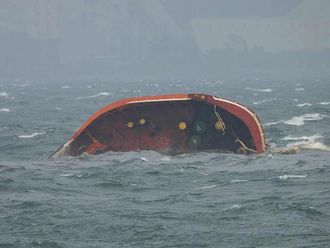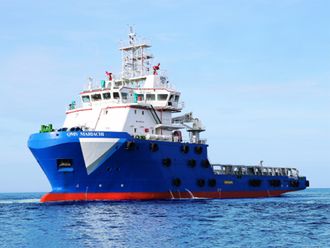Chinese offshore oil giant CNOOC Ltd is relying on its lean corporate structure, low costs and growth potential from new oil discoveries to sell its US$1-1.4 billion initial public offering.
"The existing valuation is based on existing producing wells on proven reserves, and this company is finding new oil every day," said a banker close to the deal.
CNOOC, a unit of state-owned China National Offshore Oil Corp, yesterday launched a global investor road show for the deal, which was priced at US$13.30 to US$16.60 per American Depositary Share over the weekend.
China's third-largest oil exploration and production firm has not factored in production from its unproven reserves, nor any revenues from future production sharing contracts (PSCs) with foreign oil producers. According to bankers close to the deal, the price range represents an enterprise value of about 3.1 to 3.8 times estimated 2001 EBITDE, or earnings before interest, taxes depreciation, amortisation and exploration expenses.
Other major China energy companies PetroChina and Sinopec are trading at about 3.1 to 3.2 times 2001 EBITDE, based on the average of estimates provided by underwriters Merrill Lynch, Credit Suisse First Boston and Bank of China International.
These same firms estimate that Thailand's PTT Exploration and Production Plc is trading at 5.9 times 2001 EBITDE and Brazil's Petrobras is trading at 4.1 times 2001 EBITDE. PetroChina shares closed in Hong Kong yesterday down three per cent at HK$1.29 while Sinopec's were unchanged at HK$1.13.
PetroChina shares suffered as traders said investors perceived the company's price-to-book value ratio as expensive following the release of the CNOOC pricing. Based on 1999 earnings, PetroChina's price-to-book ratio was about 0.12.
While a comparable figure was not immediately available, bankers close to the deal said CNOOC's IPO would be priced below its estimated net asset value per share of US$18-27. The estimates by IPO syndicate members, which includes cash flow from producing wells, varies according to estimates of the price of oil.
Bankers close to the deal also drew comparisons between CNOOC's franchise territory in the South China Sea and the Gulf of Mexico in an effort to illustrate it as a vast untapped territory. The CNOOC territory only has about 700 wells in mostly shallow water but is twice the size of the Gulf of Mexico, which has about 13,000 wells and is increasingly trending toward ultra deep water exploration.
However, the pricing of the IPO remains hampered by comparisons with PetroChina and Sinopec. Although CNOOC has just 1,014 employees and does not have any of the huge restructuring needs that its counterparts have, underwriters were not able to price the shares at a premium to those firms.
In October 1999, a previous listing attempt by CNOOC, led by Salomon Smith Barney, ended in failure due to pricing that was considered too aggressive by the market. The deal was withdrawn just hours after the price was slashed.
But bankers close to this year's listing bid say there is room for upside in the shares. "The pricing of CNOOC is where we need to be to sustain the valuation," one of the bankers said.
CNOOC selling IPO on discoveries, growth, say bankers
Chinese offshore oil giant CNOOC Ltd is relying on its lean corporate structure, low costs and growth potential from new oil discoveries to sell its US$1-1.4 billion initial public offering.












